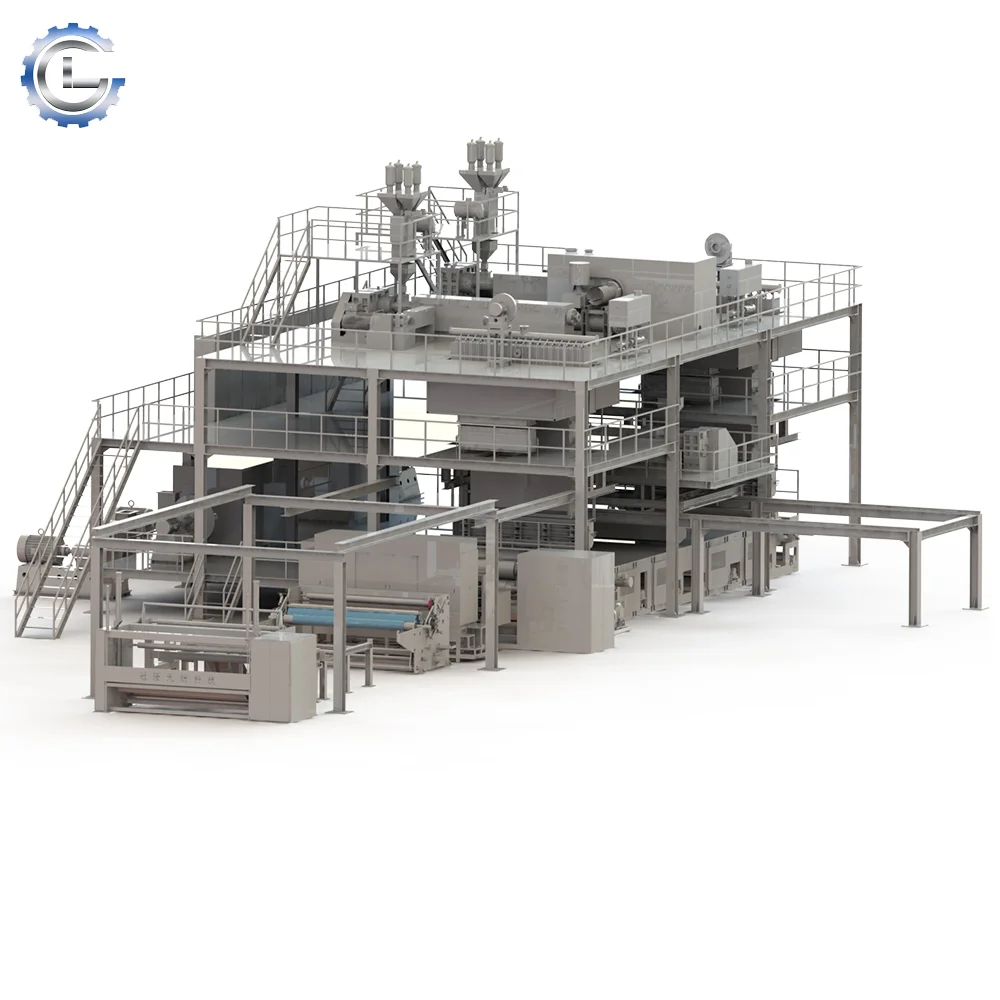
Nos últimos anos, the demand for nonwoven fabric products has skyrocketed due to their versatile applications in various industries, especially in the healthcare, higiene, and filtration sectors. Tecidos não tecidos, known for their durability, lightweight, and affordability, have become essential materials in products such as medical masks, surgical gowns, lenços umedecidos, air filters, and hygiene products. As a result, the need for high-performance production machinery like the meltblown nonwoven fabric machine and pp spunbond nonwoven fabric making machine continues to rise.
What is Meltblown Nonwoven Fabric?
Meltblown nonwoven fabric is a type of material made from fine polymer fibers, typically polypropylene (PP), created through a meltblown process. In this process, the polymer is melted and extruded through small nozzles surrounded by high-speed hot air, which blows the fibers onto a collector surface, forming a nonwoven web. This fabric is renowned for its exceptional filtration efficiency, breathability, and softness, making it highly suitable for medical and filtration products.
O meltblown nonwoven machine is the key equipment in producing meltblown fabrics. These machines are designed to deliver consistent fiber diameter and uniform fabric distribution, ensuring high-quality output that meets industry standards. With advanced features like automatic control systems and customizable configurations, modern meltblown machines offer high efficiency and flexibility for manufacturers.
What is Spunbond Nonwoven Fabric?
Another major category in the nonwoven industry is spunbond nonwoven fabric. This material is produced using a different technology called the spunbond process, where polymer granules are melted and spun into continuous filaments. These filaments are then laid randomly onto a conveyor belt and bonded together through thermal or chemical means.
O pp spunbond nonwoven fabric making machine is essential for producing high-strength, lightweight, and cost-effective nonwoven fabrics. Spunbond fabrics are commonly used in agriculture, automotive interiors, medical packaging, produtos de higiene, and construction industries due to their excellent strength-to-weight ratio, breathability, and resistance to tearing.
Market Trends Driving Machine Demand
The global nonwoven fabric market has seen significant growth in recent years, and this trend is expected to continue. Several factors are contributing to this increase:
- Rising demand for medical and hygiene products: The COVID-19 pandemic emphasized the need for reliable personal protective equipment (PPE) like face masks and gowns, which heavily rely on meltblown and spunbond fabrics.
- Growth in air and liquid filtration industries: Industries worldwide are adopting more stringent air and water filtration systems, leading to a surge in the use of meltblown fabrics with superior filtration capabilities.
- Expansion in agriculture and construction sectors: Spunbond fabrics are increasingly used in crop protection, landscaping, and building insulation due to their durability and cost-effectiveness.
Manufacturers are now investing in advanced meltblown nonwoven fabric machines and pp spunbond nonwoven fabric making machines to meet growing demands while improving production efficiency and reducing operational costs.
Why Choose GL Nonwoven Machinery?
As one of the trusted suppliers in the industry, GL Nonwoven Machinery offers a comprehensive range of state-of-the-art nonwoven fabric production equipment. The company specializes in high-performance meltblown nonwoven machines and pp spunbond nonwoven fabric making machines that cater to a variety of production needs.
GL Nonwoven Machinery’s equipment stands out for its:
- High precision and stable performance
- Energy efficiency and low maintenance
- Customizable configurations
- User-friendly control systems
With years of experience and a commitment to quality, GL Nonwoven Machinery ensures reliable solutions for nonwoven manufacturers worldwide.
